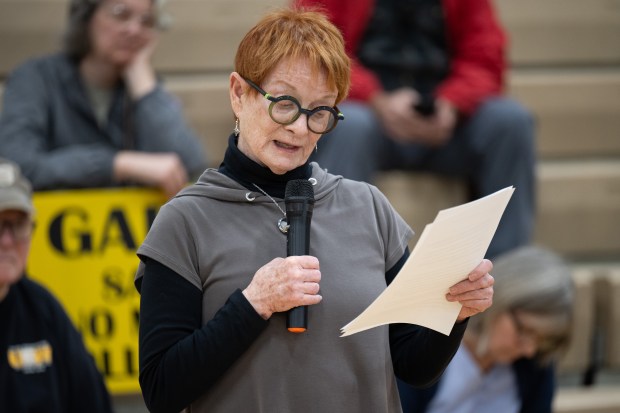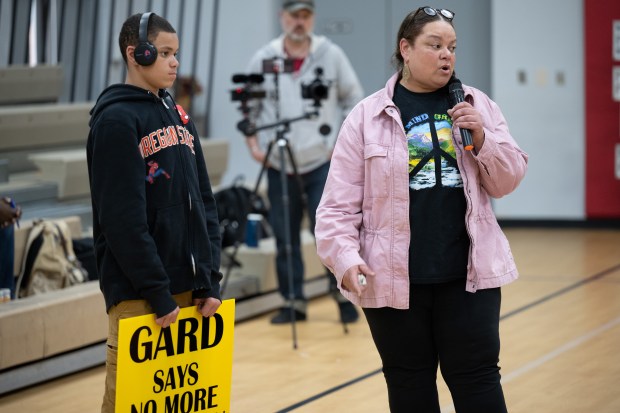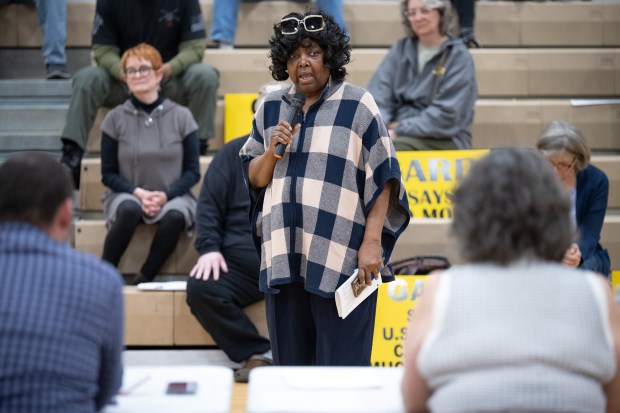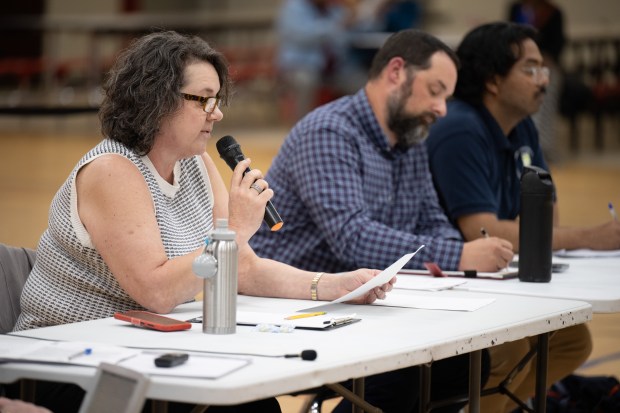The Indiana Department of Environmental Management extended its public comment period for the U.S. Steel Gary Works’ air quality permit, but there’s no definitive timeline for the agency to make a final decision.
Indiana Department of Environmental Management branch chief Jenny Acker — one of five IDEM representatives who attended a hearing in Gary at 21st Century Charter School on April 25th — said they’re able to take as long as they need to parse the comments made by several residents. They then send their conclusions to the U.S. Environmental Protection Agency, and it has 45 days from then to make its decision, she said.
The Title V Air Draft Permit as it is has issues, according to the Environmental Law & Policy Center. In a paper it passed out at the meeting, ELPC said the permit doesn’t make clear that the EPA’s final revisions controlling hazardous air pollutants will extend to Gary Works, for example, and fails to include adequate monitoring and testing, the paper reads.
Further, it doesn’t contain adequate record keeping and reporting for multiple emissions units as required by law, it said, and most crucially to residents, didn’t consider environmental justice issues in the renewal. The EPA’s website defines “environmental justice” as “the fair treatment and meaningful involvement of all people regardless of race, color, national origin, or income, with respect to the development, implementation, and enforcement of environmental laws, regulations, and policies.”
Of the eight currently operating integrated steel and iron facilities, Gary Works has “the most significant impact on communities of color and those exposed to lead paint through pre-1960 housing,” the ELPC said.
The environmental justice part is what brought out about 40 remonstrators, who let the IDEM representatives know they “aren’t second-class citizens.” Terry Steagall, of Highland, a retired member if USW Local 1010, asked the agency not to accept the steel industry’s rebranding of iron ore sinter plants as recycling plants.

“Fenceline monitoring is not a true measurement of pollution, and the monitoring needs to be at the pollution source along with fenceline monitoring with real-time reporting, not delayed reporting that does not allow for immediate corrective action,” he said.
Jennie Rudderham, of Gary, said the model Gary Works is using can’t be correct if pollution levels are six times above the permit level.
“Gary isn’t the city USX built — it’s (the) city it destroyed,” she said.

Stephen Mays, president of the NAACP’s Gary chapter, suggested Gary Works could invest in hydrogen-based steelmaking, a greener process he said ArcelorMittal is already using in Germany.
“Two counties (in Indiana) pay for emissions — why are we getting taxed for your pollution!?” he said. “When storms come, we see you open the bleeders and let the contaminants out.”
In partnership with Texas-based CarbonFree Chemical Holdings, U.S. Steel recently announced a project aimed at cutting up to 50,000 tons a year of planet-warming carbon dioxide from U.S. Steel’s Gary Works plant. The SkyCycle process would capture the blast furnace carbon dioxide emissions and turn them into calcium carbonate, which has a wide variety of industrial and chemical uses.

Environmental advocates like Dorreen Carey are skeptical of how effective the process will be.
“We want to know more about it,” said Dorreen Carey, president of Gary Advocates for Responsible Development, told the Post-Tribune previously. “What is their plan? … If this is just a plan for continuing to use coal over time, that’s not really getting us to a point where they’re not using fossil fuels.”

Michelle L. Quinn is a freelance reporter for the Post-Tribune.
Freelance reporter Tim Zorn contributed.




